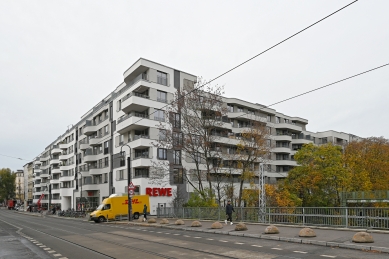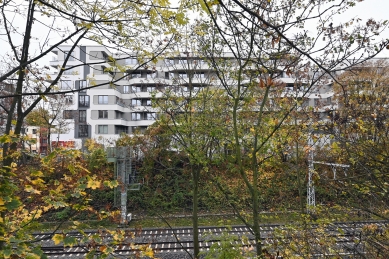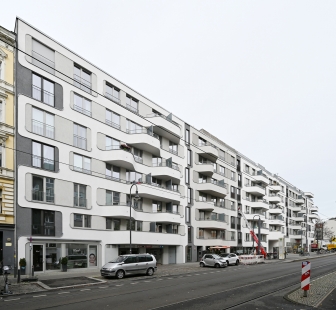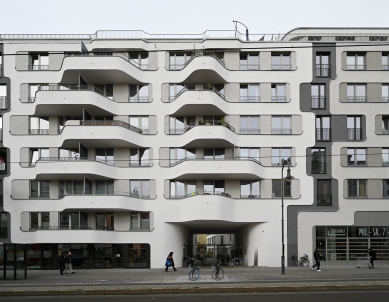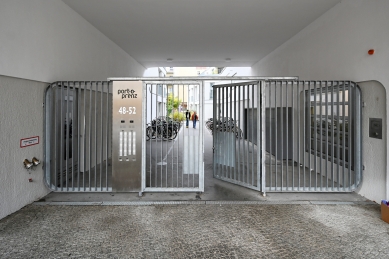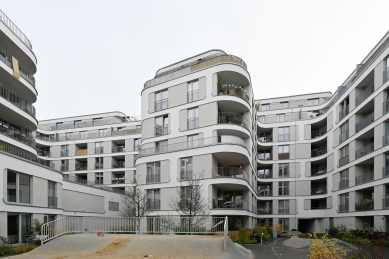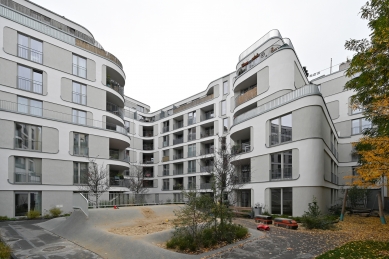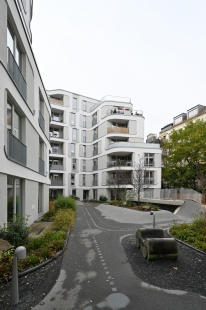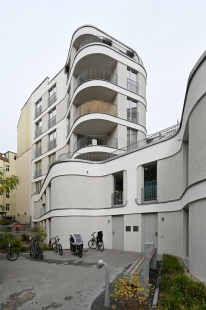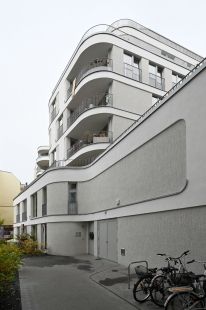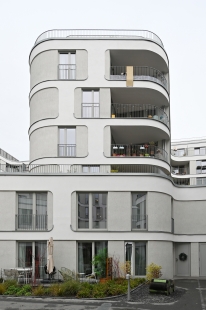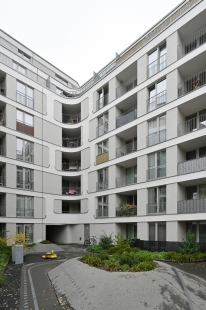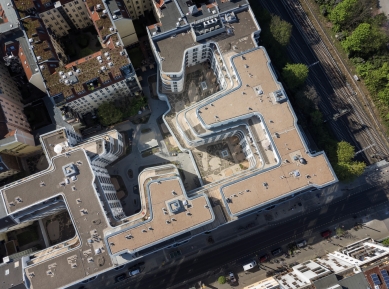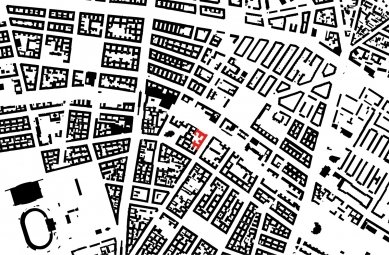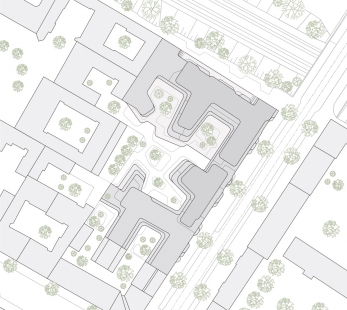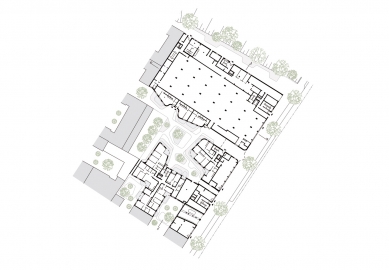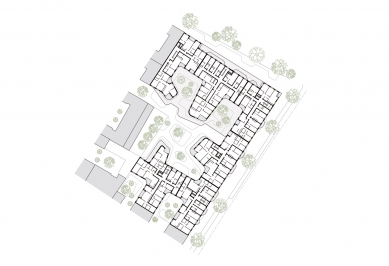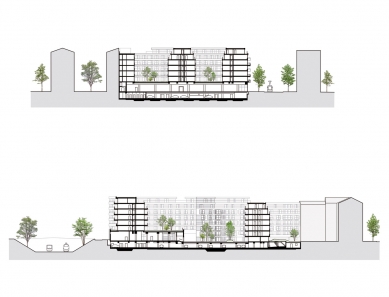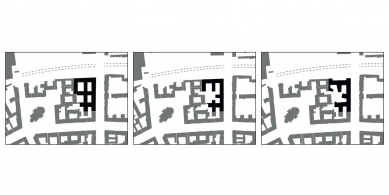
Port-o-Prenz Apartments

Living in Prenzlauer Berg.
Mothers drinking their latte macchiatos, “Bio-Berg,” Mauerpark hippies, an artists’ neighborhood: Prenzlauer Berg stands for so many clichés. The lively area around Kollwitzplatz and Helmholtzplatz combines them all. In fact, there’s hardly another part of the city that has undergone as dramatic a transformation since the fall of the Berlin Wall.
The numerous building complexes from the late nineteenth and early twentieth centuries were extensively renovated after 1989 and the empty lots left by wartime destruction were mostly filled. With the construction, the residential structure of the neighborhood changed. Easygoing restaurants, small shops, and cafes replaced the popular bars and a unique subcultural infrastructure. A dynamic international flair shapes this Berlin neighborhood teeming with variety.
During the post-war period, many of the lots left empty by wartime damage, like this one on Pappelallee, had been filled with single-story supermarkets that are now being torn down and replaced with architecture that combines retail with much-needed housing: Port-o-Prenz is an example of this. It now closes the block, fitting in with the existing architecture and thus complementing the heritage-protected ensemble of buildings around Gethsemane-Kirche. The street draws a straight line to the horizon with a direct view of Berlin’s Television Tower. With Port-o-Prenz, we have succeeded in realizing a project with top living quality, combining closed housing blocks that fit well in the surrounding neighborhood with a generous courtyard; taking account of the limited space available in our cities, and offering a concept that points to the future in regard to the current housing crisis.
The inside of the block of the six linked buildings terraces a playful, green landscape, resulting in a continuous and at the same time varied interior. Landscaped roof terraces and surrounding private plots combine to form a generous place of retreat in a lively urban environment. This flowing reinterpretation of the Berlin courtyards typical of the Wilhelmine period features views of the neighboring courtyards, resulting in a semi-public intimacy in which the residents of the new quartier can find a way with one another and live as neighbors.
In each building, Port-o-Prenz combines various apartment types, preventing segregation. 240 units with 1–5 rooms are intended for various clienteles. This spatial constellation allows for a balanced residential structure of students, families, singles, and pensioners. In case of a change in personal living circumstances, it is thus possible to keep the familiar location, the social surroundings, and the neighborhood, and to move within the complex. These flexible living options are promoted by the rich infrastructure in the neighborhood. Depending on location, all apartments feature a balcony, loggia, or roof-top terrace.
Mothers drinking their latte macchiatos, “Bio-Berg,” Mauerpark hippies, an artists’ neighborhood: Prenzlauer Berg stands for so many clichés. The lively area around Kollwitzplatz and Helmholtzplatz combines them all. In fact, there’s hardly another part of the city that has undergone as dramatic a transformation since the fall of the Berlin Wall.
The numerous building complexes from the late nineteenth and early twentieth centuries were extensively renovated after 1989 and the empty lots left by wartime destruction were mostly filled. With the construction, the residential structure of the neighborhood changed. Easygoing restaurants, small shops, and cafes replaced the popular bars and a unique subcultural infrastructure. A dynamic international flair shapes this Berlin neighborhood teeming with variety.
During the post-war period, many of the lots left empty by wartime damage, like this one on Pappelallee, had been filled with single-story supermarkets that are now being torn down and replaced with architecture that combines retail with much-needed housing: Port-o-Prenz is an example of this. It now closes the block, fitting in with the existing architecture and thus complementing the heritage-protected ensemble of buildings around Gethsemane-Kirche. The street draws a straight line to the horizon with a direct view of Berlin’s Television Tower. With Port-o-Prenz, we have succeeded in realizing a project with top living quality, combining closed housing blocks that fit well in the surrounding neighborhood with a generous courtyard; taking account of the limited space available in our cities, and offering a concept that points to the future in regard to the current housing crisis.
The inside of the block of the six linked buildings terraces a playful, green landscape, resulting in a continuous and at the same time varied interior. Landscaped roof terraces and surrounding private plots combine to form a generous place of retreat in a lively urban environment. This flowing reinterpretation of the Berlin courtyards typical of the Wilhelmine period features views of the neighboring courtyards, resulting in a semi-public intimacy in which the residents of the new quartier can find a way with one another and live as neighbors.
In each building, Port-o-Prenz combines various apartment types, preventing segregation. 240 units with 1–5 rooms are intended for various clienteles. This spatial constellation allows for a balanced residential structure of students, families, singles, and pensioners. In case of a change in personal living circumstances, it is thus possible to keep the familiar location, the social surroundings, and the neighborhood, and to move within the complex. These flexible living options are promoted by the rich infrastructure in the neighborhood. Depending on location, all apartments feature a balcony, loggia, or roof-top terrace.
J. Mayer H. Architects
0 comments
add comment


